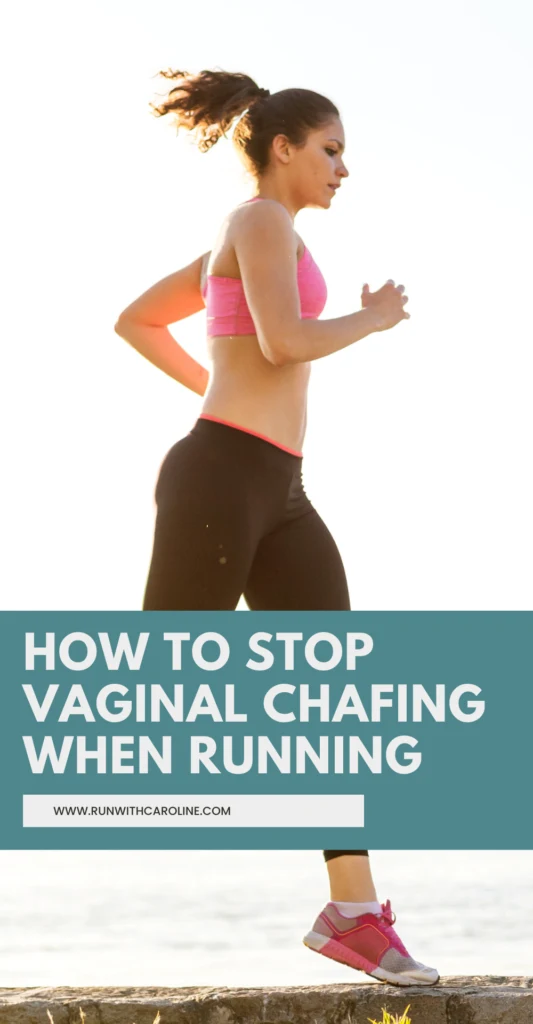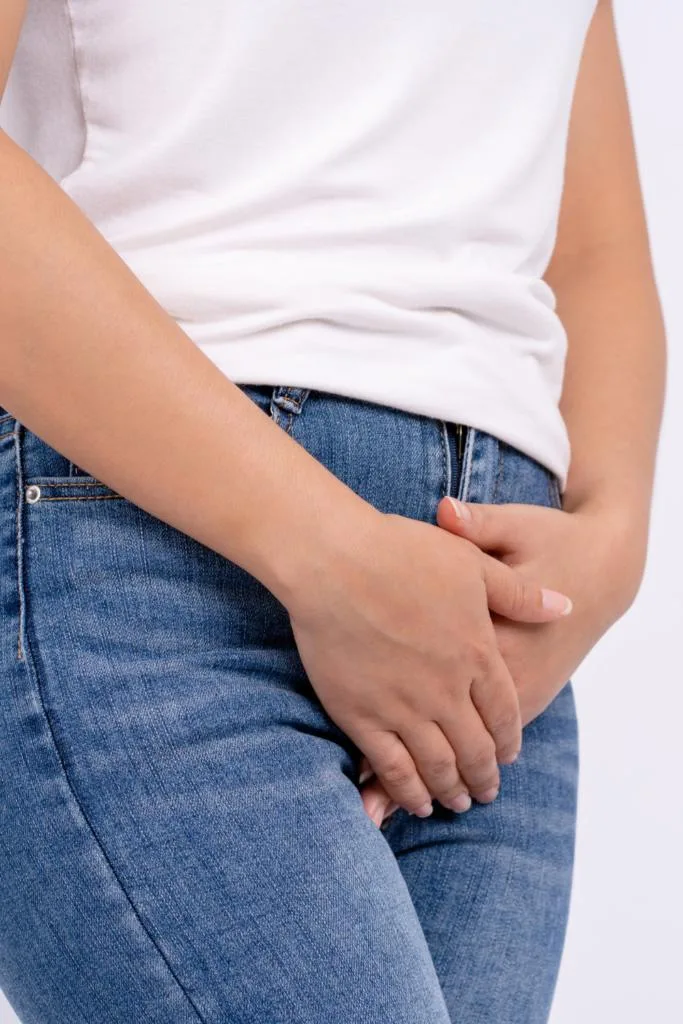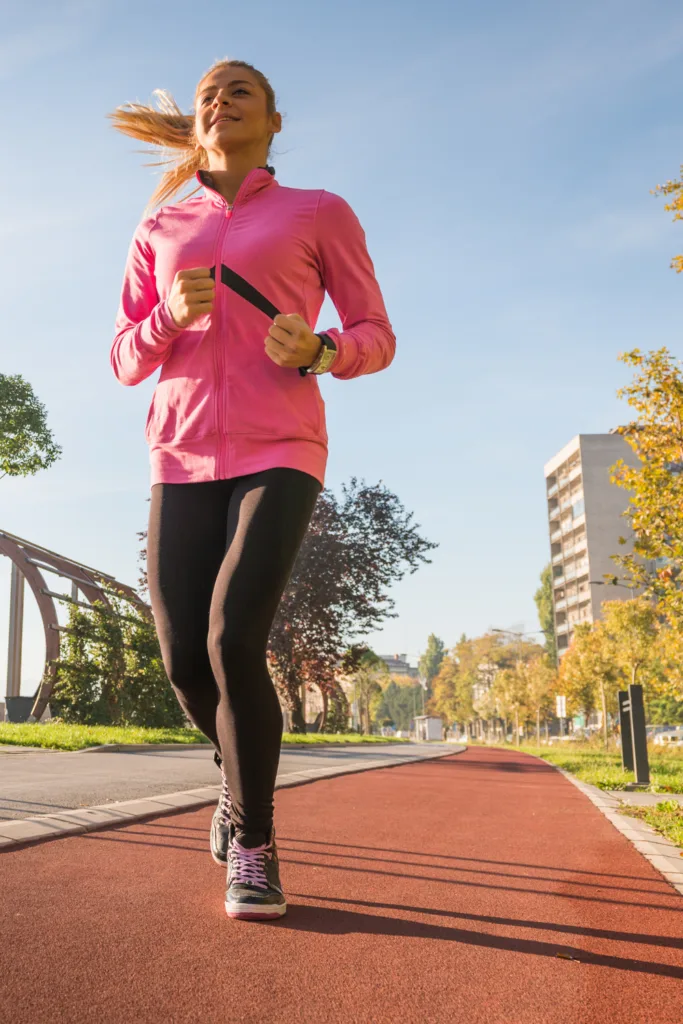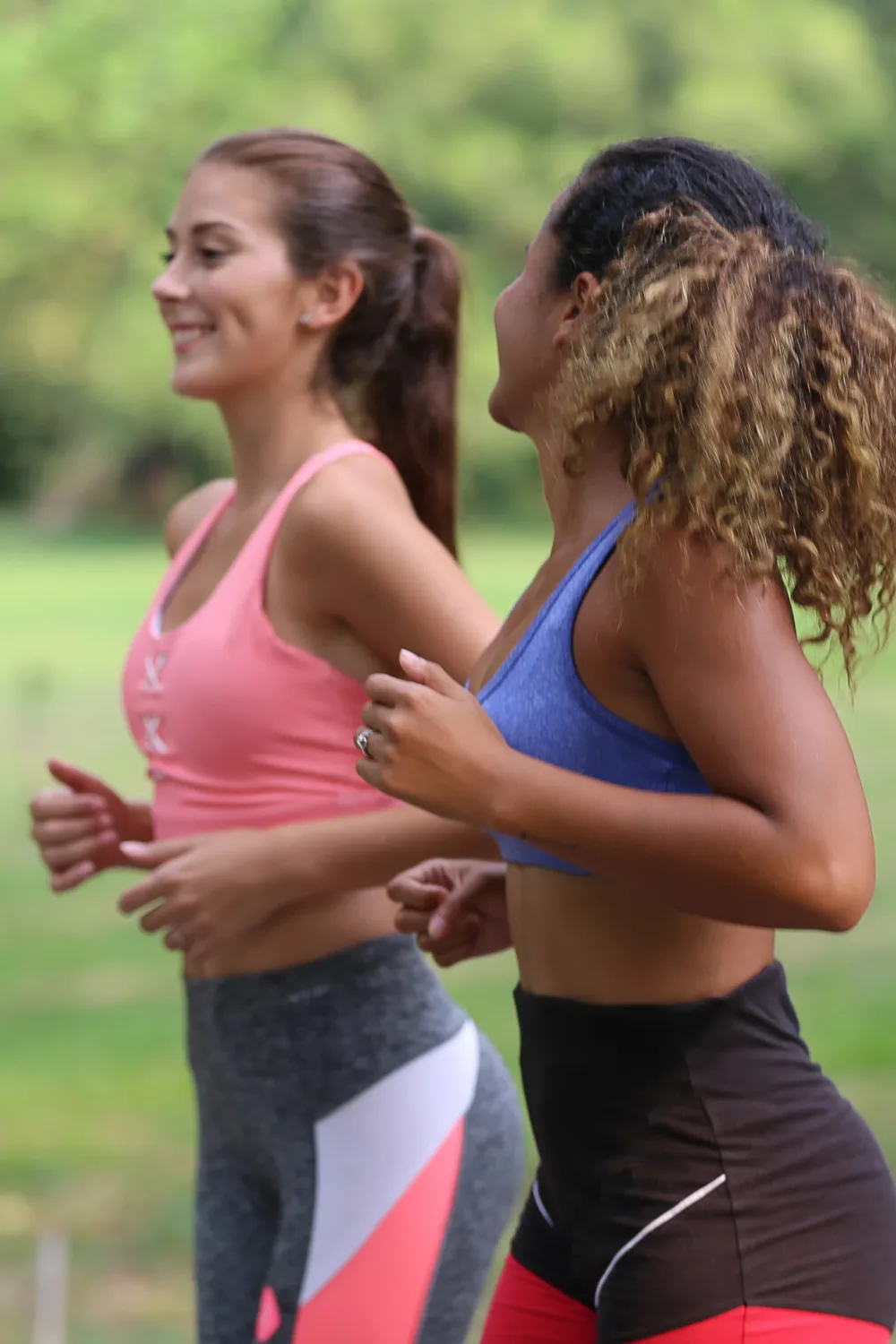Vaginal chafing is a common concern for many women – either as a result of exercise or sexual intercourse.
Along with ingrown hairs and acne, vaginal chafing can be painful and downright frustrating, especially if it gets in the way of you enjoying your run.
The good news is there are ways to treat vaginal chafing and prevent it for good so it doesn’t stop you in your tracks.
But what exactly causes vaginal chafing? And what’s the best way to treat it?
In this guide we’ll explore:
- What is vaginal chafing?
- What causes vaginal chafing?
- Who is at risk of vaginal chafing?
- What does vaginal chafing look like?
- How to treat vaginal chafing
- How to stop vaginal chafing
Ready?
Let’s get started!

What is vaginal chafing?
If you run regularly you may already experience chafing between your thighs and under your boobs.
Chafing is caused by your skin rubbing against skin (such as between your thighs) or skin rubbing against fabric (such as under your boobs when your skin rubs against your sports bra).
While these types of chafing are well-known in the running community, vaginal chafing is not as widely talked about – but it’s about time it was!
Chafing in the vaginal area typically happens on your vulva (the outer part of your vagina) and your labia (the outer lips).
As a result you experience a painful rubbing sensation which is made worse by repeated irritation.
Related: Should you work out on your period? 6 best exercises
What causes vaginal chafing?
The primary causes of vaginal chafing, like chafing in other parts of your body, are:
- skin on skin irritation
- friction between your vulva and/or labia and your underwear.
Wetness, sweat, vaginal discharge and menstruation can dry and become sticky.
Stickiness can cause increased friction between folds of the skin.
Friction can also occur between your skin and fabrics, especially when rough seams, fibres, fastenings and threads are involved.
Many people with eczema find that certain fabrics cause sweating and irritation, which can trigger itchy skin.
Related: What is an endometriosis flare up? Exercising with endometriosis

Related: Moisture wicking underwear: Benefits + where to buy
Who is at risk of vaginal chafing?
You are more susceptible to vaginal chafing if you:
- Wear tight underwear
- Wear tight shorts, or shorts with in-built underwear that ride up
- Wear damp or sweaty underwear
- Wear a sanitary pad when you run
- Shave your pubic hair
Running during the summer months when you are more likely to sweat more can also trigger the condition.
Freshly waxed or shaven skin is also a primary cause of vaginal chafing.
Related: Can you exercise during IVF? Tips + exercises to avoid
What does vaginal chafing look like?
The key symptoms of vaginal chafing are:
- Redness on and around the vulva and lips
- A stinging sensation
- An itchy sensation
In more serious causes, the vulva and lips can become swollen and inflamed.
After repeated irritation you may also experience bleeding, which can lead to infection.
So it’s important you see your doctor if your vulva and labia start to bleed as a result of the irritation.
Signs of infection are fluid build-up and puss oozing from the affected area.
In rare cases, a yeast infection can build up in the folds of the skin around the vagina.
In cases like these, your doctor will prescribe an anti-fungal cream to fight the infection.
Related: What is runner’s face? Causes + 10 prevention tips

Related: Itchy pubic hair: Causes + prevention tips
How to treat vaginal chafing
The good news is vaginal chafing can be treated as soon as you see the first signs of irritation.
#1 Don’t push through the pain
If you start to feel irritation or rubbing down there then take it as a sign to stop.
As with any form of discomfort or pain, your body is telling you something and you know your body best.
Don’t push through this initial discomfort as you could make it worse and more painful.
#2 Take a shower
As soon as you get home from a run, take off your wet clothes and underwear, jump in the shower and rinse the affected area with clean water.
Make sure you use a gentle soap to lessen the stinging and irritation – unperfumed soap is best.
You’ll also want to avoid rubbing the area with a towel after the shower – pat dry or air dry instead.
#3 Apply an ice pack
Ice will help to reduce any swelling and inflammation.
Grab a bag of peas or an ice pack, wrap it in a kitchen towel and apply it to the affected area for about 10 minutes at a time.
#4 Take an oatmeal bath
People have used oatmeal baths for centuries to treat irritated skin.
According to WebMD, an oatmeal bath helps to bind and clean your skin and form a protective barrier.
It also helps to hold in moisture and ease inflammation.
But before you chuck your breakfast oats into your bath, it’s important to note that the oatmeal used to treat irritation is different to breakfast oatmeal.
Called colloidal oatmeal, this type of oatmeal is used to soothe skin and increase moisture in the skin and can be found in most health food stores.
Here’s how to make your own DIY oatmeal:
- Start with uncooked, whole colloidal oats.
- Grind the oats into a fine powder.
- When you put the oats into water, the water should turn into a milky white colour.
You’ll want to put 1 cup of oats in a lukewarm bath.
After soaking for about 10-15 minutes, your skin should feel soft and silky.
In some cases, an oatmeal bath can cause redness and inflammation so if you experience these unfortunate side effects, don’t continue with the home remedy.
#5 Apply hydrocortisone cream
Your doctor may recommend hydrocortisone cream if the irritation doesn’t clear up in a matter of days.
Hydrocortisone is a type of steroid cream that is used to treat skin irritation and swelling.
There are different strengths of hydrocortisone cream – from 0.1% to 2% – your doctor will be able to advise on the most appropriate strength to be used based on your circumstances.
You can only buy hydrocortisone cream that is up to 1% strength over the counter. Anything higher than this needs to be prescribed by a doctor.
Hydrocortisone cream should not be used on open wounds.
If you’ve got bleeding or signs of an infection, let your doctor know and they’ll be able to advise on a different treatment approach.
Related: Lower back pain after running: Causes + 7 ways to prevent it

How to stop vaginal chafing
Now you know all about vaginal chafing, here are some tips to stop it happening for good.
#1 Use a lubricant
Lubricants in the form of gels and creams can be applied in the affected area to help prevent chafing and irritation.
Be sure to find lubricants with gentle and unperfumed ingredients in them as you don’t want the gel or cream to upset the delicate pH balance in your vagina.
#2 Wear breathable underwear
One of the main causes of vaginal chafing is tight fitting underwear, so it’s important you wear loose-fitting, breathable underwear on your run.
If bacteria and moisture become trapped against the skin around your vagina, it can cause yeast infections or urinary tract infections (UTIs).
When it comes to finding running underwear, look for moisture control, comfort and durability.
Opt for underwear that are made of breathable and sweat-wicking fabrics like polyester and nylon.
Brands like Runderwear sell underwear that is specifically designed to be worn on a run.
There are also lots of other brands like Reebok, Under Armour and New Balance that offer great running underwear options.
#3 Wear loose-fitting shorts
If you do wear shorts on your run, opt for loose-fitting styles and avoid styles that have in-built underwear as they can ride up and cause chafing.
As with your underwear, opt for sweat-wicking fabrics to reduce the risk of irritation.
#4 Use shaving cream
If you shave your pubic hair, use shaving cream as this will help to reduce skin irritation when you shave.
Another good tip is to wait until the end of your shower to shave your skin.
By this time your skin will be softer and warmer which are better conditions to prevent irritation and in-grown hairs.
And remember, freshly shaven or waxed skin is more prone to irritation, so avoid going for a run soon after a shave or wax.
Related: Hip pain after running: 8 causes + how to fix it
- 5 things I wish I’d known before returning to running - March 3, 2024
- Running 20 minutes a day: Benefits + how to start - January 27, 2024
- How to run your first 2 hour half marathon - January 16, 2024
